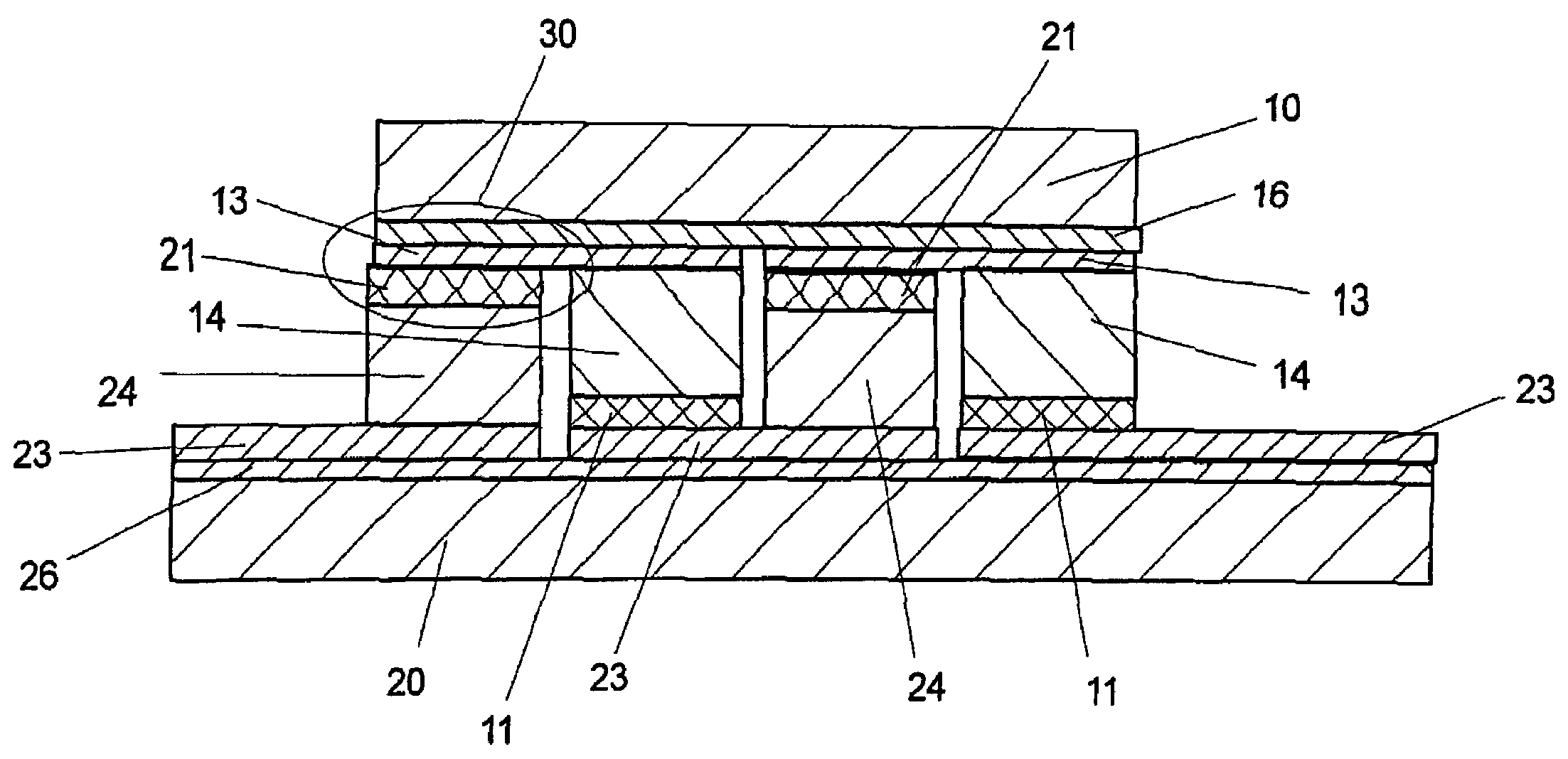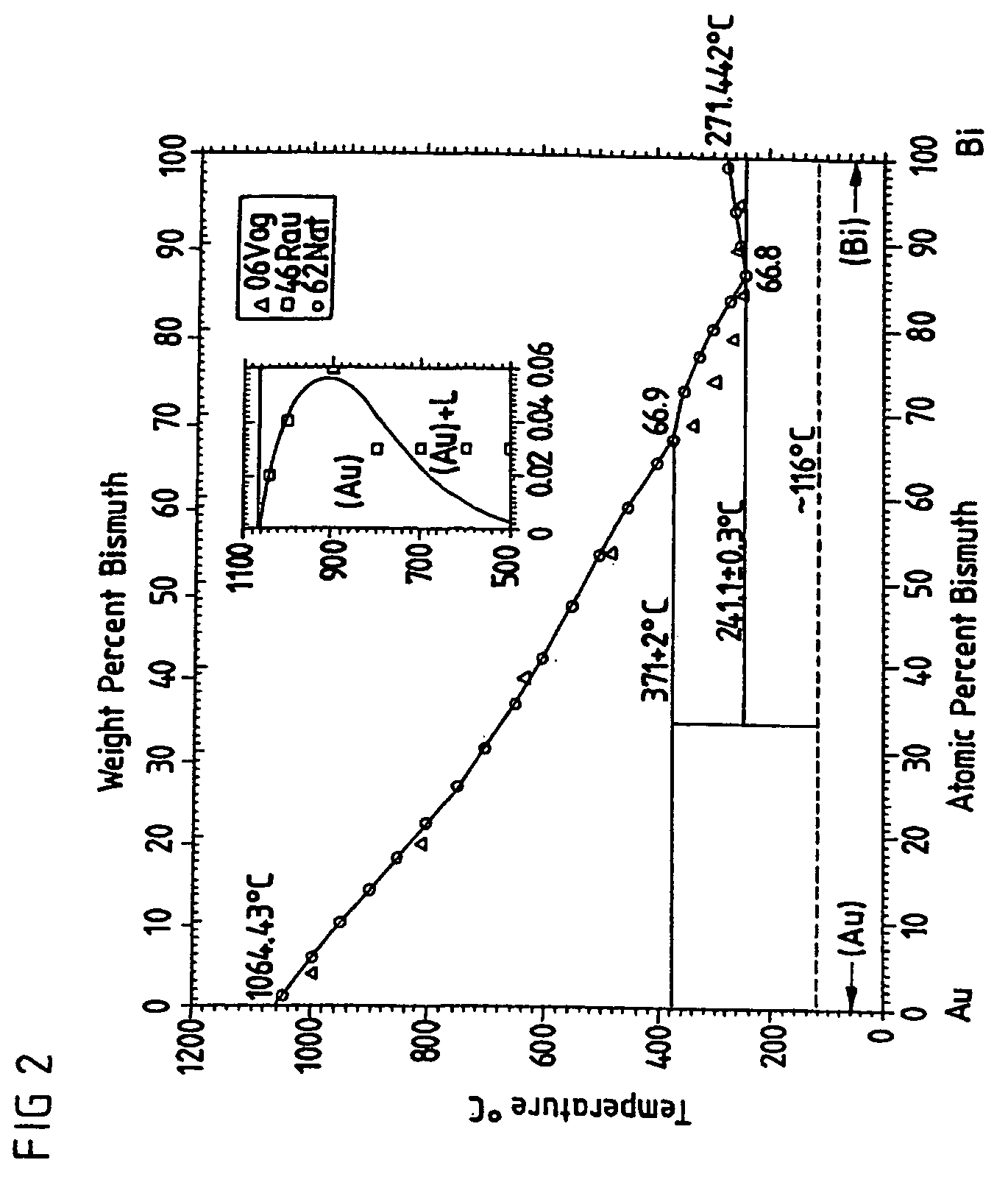Solder, microelectromechanical component and device, and a process for producing a component or device
- Summary
- Abstract
- Description
- Claims
- Application Information
AI Technical Summary
Benefits of technology
Problems solved by technology
Method used
Image
Examples
Embodiment Construction
[0040]FIG. 1 illustrates a phase diagram for the binary gold-tin (AuSn) system, which is used as thin-film solder in the electronics industry.
[0041]The eutectic at 30 atomic % tin, 70 atomic % Au (upper x axis) is of relevance to the present invention.
[0042]FIG. 2 shows a phase diagram for an embodiment of the thin-film solder according to the invention with a gold-bismuth (AuBi) system. The atomic percentages of bismuth are plotted on the lower x axis. This materials system has the required low eutectic temperature, namely 241° C. at approx. 87 atomic % of bismuth. The solidus curve rises only slowly, starting from the eutectic point, i.e. the temperature of the final melt is less sensitive to minor fluctuations in concentration.
[0043]For the production of thin-film thermoelectric devices, as in DE 198 45 104 A1, the fabrication sequence described in that document is considerably simplified when a gold-bismuth system is used. The soldering partner bismuth, unlike the soldering part...
PUM
| Property | Measurement | Unit |
|---|---|---|
| Thickness | aaaaa | aaaaa |
| Thickness | aaaaa | aaaaa |
| Thermal properties | aaaaa | aaaaa |
Abstract
Description
Claims
Application Information
 Login to View More
Login to View More - R&D
- Intellectual Property
- Life Sciences
- Materials
- Tech Scout
- Unparalleled Data Quality
- Higher Quality Content
- 60% Fewer Hallucinations
Browse by: Latest US Patents, China's latest patents, Technical Efficacy Thesaurus, Application Domain, Technology Topic, Popular Technical Reports.
© 2025 PatSnap. All rights reserved.Legal|Privacy policy|Modern Slavery Act Transparency Statement|Sitemap|About US| Contact US: help@patsnap.com



